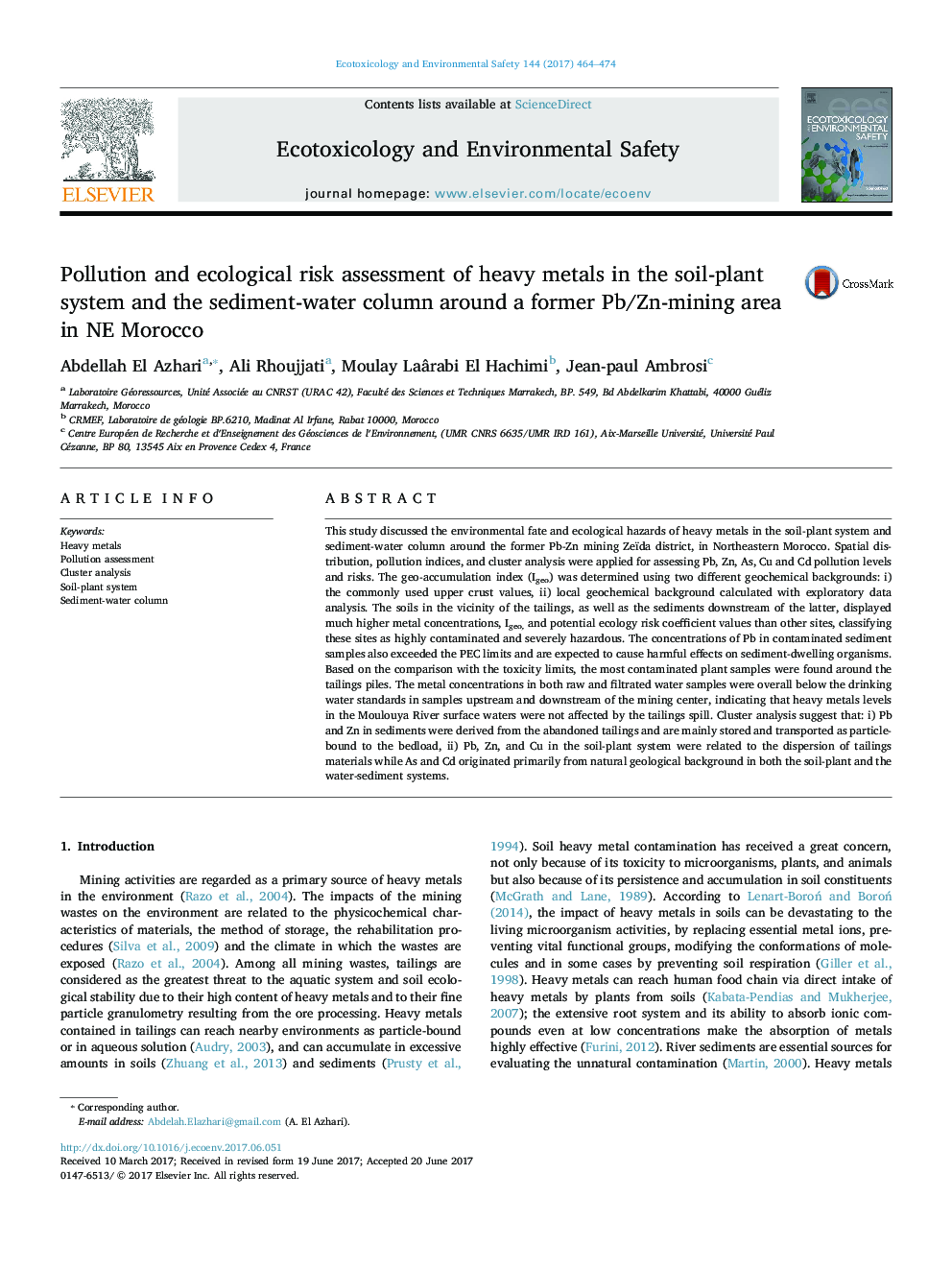| Article ID | Journal | Published Year | Pages | File Type |
|---|---|---|---|---|
| 5747510 | Ecotoxicology and Environmental Safety | 2017 | 11 Pages |
Abstract
This study discussed the environmental fate and ecological hazards of heavy metals in the soil-plant system and sediment-water column around the former Pb-Zn mining Zeïda district, in Northeastern Morocco. Spatial distribution, pollution indices, and cluster analysis were applied for assessing Pb, Zn, As, Cu and Cd pollution levels and risks. The geo-accumulation index (Igeo) was determined using two different geochemical backgrounds: i) the commonly used upper crust values, ii) local geochemical background calculated with exploratory data analysis. The soils in the vicinity of the tailings, as well as the sediments downstream of the latter, displayed much higher metal concentrations, Igeo, and potential ecology risk coefficient values than other sites, classifying these sites as highly contaminated and severely hazardous. The concentrations of Pb in contaminated sediment samples also exceeded the PEC limits and are expected to cause harmful effects on sediment-dwelling organisms. Based on the comparison with the toxicity limits, the most contaminated plant samples were found around the tailings piles. The metal concentrations in both raw and filtrated water samples were overall below the drinking water standards in samples upstream and downstream of the mining center, indicating that heavy metals levels in the Moulouya River surface waters were not affected by the tailings spill. Cluster analysis suggest that: i) Pb and Zn in sediments were derived from the abandoned tailings and are mainly stored and transported as particle-bound to the bedload, ii) Pb, Zn, and Cu in the soil-plant system were related to the dispersion of tailings materials while As and Cd originated primarily from natural geological background in both the soil-plant and the water-sediment systems.
Related Topics
Life Sciences
Environmental Science
Environmental Chemistry
Authors
Abdellah El Azhari, Ali Rhoujjati, Moulay Laârabi El Hachimi, Jean-paul Ambrosi,
